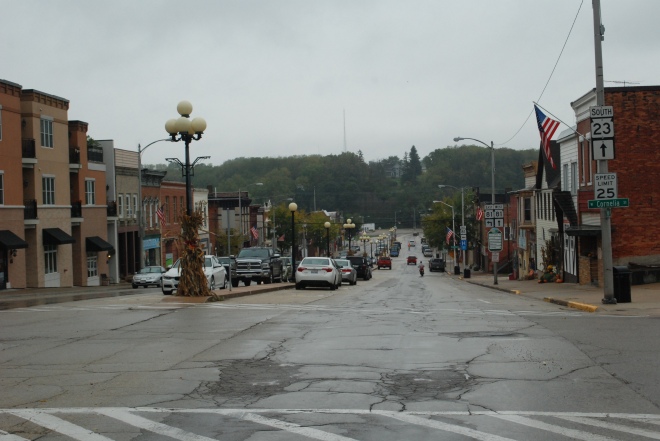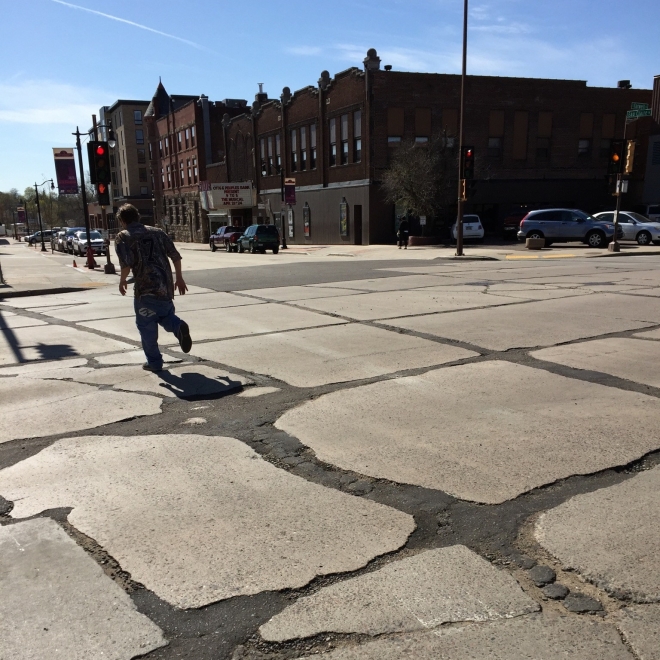
January always gets me thinking about numbers. Perhaps it’s from ytears of preparing and presenting year-end reports to radio listeners (in a younger life) or to boards of directors (in my..ahem..prime). When the calendar says it’s January, I automatically start to tally things up. You can learn a lot from numbers.
One very enlightening number that I heard this month is $1,466,370,391, followed by the number 1,596. $1.47 billion is the total amount needed to fund each of the 1,596 transportation projects that have been submitted by cities, villages, towns and counties in response to a one-time grant program created by the Wisconsin Legislature and managed by the Wisconsin Department of Transportation. The “Multimodal Local Supplement” (MLS) grant was created by lawmakers who were being told that local transportation systems were in need of catching up after years of deferred repairs. It was funded with $75 million. Demand has exceeded available funding by over 1,800-percent.
As expected, roads make up the dominant share of the applications. Roads are at the top of most local priority lists, although there are also important harbor and bus-related requests. Bicycle and pedestrian applications account for roughly 3.5% of the total. It’s too soon to say what the final “mix” of projects actually funded by the department will look like.
Review committees made up of local transportation experts are poring over the hundreds of requests now. They have the unenviable job of recommending which ones should be funded. Pity them. The reality is that there will be more applications rejected than will be funded. At most a few hundred projects will be funded out of the 1,596 requests. Good, necessary projects will be left behind.
Wisconsin has known that its transportation system had some cracks and was suffering deferred maintenance. In addition to providing a needed shot in the arm for local public works budgets, these January numbers give us a glimpse of just how far behind we are. Wisconsin now has a 1,596-page catalog of local transportation needs. We obviously still have some work to do.
I don’t want to close this column on a “downer.” The Governor and Legislature deserve credit for making a significant investment in transportation funding (for all modes) in the most recent state budget. The $75 million one-time MLS grants will provide very important relief. We can complain that it’s not enough, but let’s not forget that it’s not just about roads. It’s not easy to balance growing Medicaid, school aids, University and corrections needs with equally-important roads, bridges, harbors and transit needs. It’s all important to the citizens of Wisconsin and there’s just so much money available. Those are hard decisions and we thank our state elected leaders for making them.
But, most of all, I argue that this most recent crop of numbers is a testament to the people who drive snow plows and buses and those who do the thankless job of caring for the pavement beneath them. Local government workers across Wisconsin deserve a huge pat on the back for keeping those underfunded local systems operating as well as they have. The needs have been growing, and this grant program has shown just how big the need has become. But, in the meantime, men and women in high-visibility vests with shovels in their hands have been holding it together. In classic, pragmatic local government “can-do” fashion, you have been keeping Main Street plowed and paved, the bike paths open, the harbors deep and the buses running on time. Thank you. Stay safe.
 Wisconsin’s long road back to a well-maintained transportation system has begun. Yesterday the Wisconsin Department of Transportation announced the
Wisconsin’s long road back to a well-maintained transportation system has begun. Yesterday the Wisconsin Department of Transportation announced the